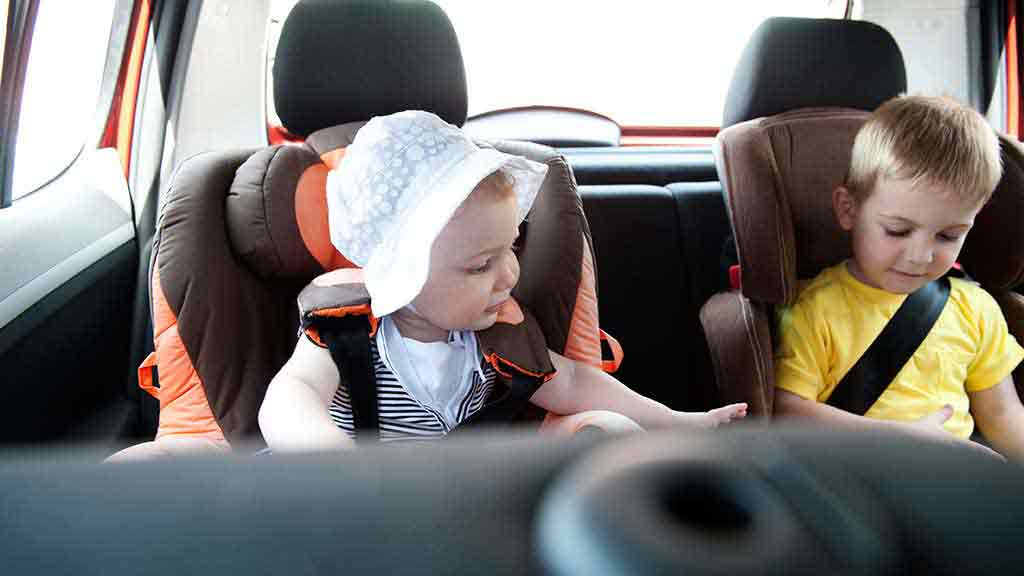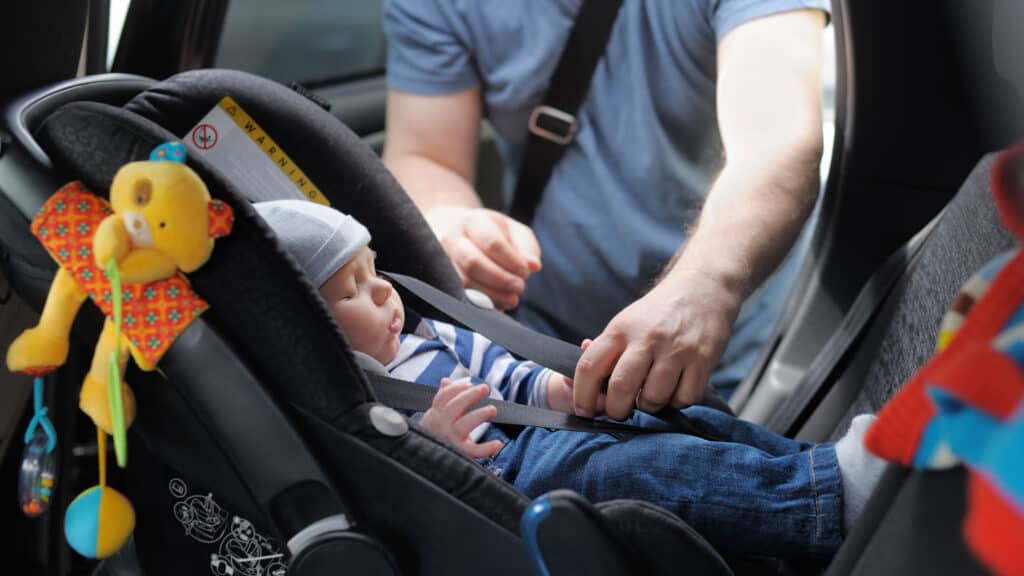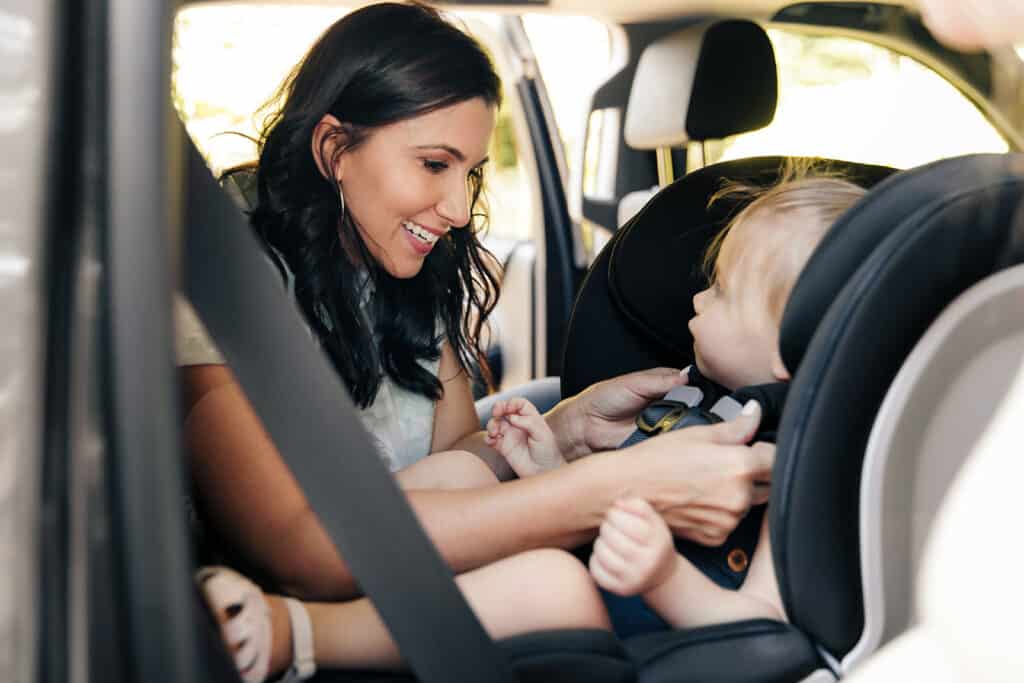Child safety is a top priority for parents, and one of the most important investments they can make is in a high-quality car seat. With so many options available, it can be overwhelming to determine what features and factors are most important when selecting a child-friendly car seat.
This article will provide guidance on what to look for when buying a child-friendly car seat.
Understanding the different types of car seats available is crucial when selecting the right one for your child. Safety standards and regulations are also important to consider, as they ensure the car seat meets the necessary safety requirements.
Additionally, installation and use are critical factors to consider, as well as maintaining the car seat to ensure it stays in good condition. Finally, buying a used car seat requires additional considerations to ensure it is still safe for use.
Key Takeaways
- Understanding the different types of car seats available is crucial when selecting the right one for your child.
- Safety standards and regulations ensure the car seat meets the necessary safety requirements.
- Installation and use, maintaining the car seat, and buying a used car seat require additional considerations to ensure safety.
Understanding Car Seat Types
When it comes to buying a child-friendly car seat, it’s important to understand the different types of car seats available in the market. There are four main types of car seats: Infant Car Seats, Convertible Car Seats, All-In-One Car Seats, and Booster Seats.
Each type of car seat has its unique features and is designed for specific age groups of children.
Infant Car Seats
Infant car seats are designed for newborns and infants up to 1 year old or up to 35 pounds. They are rear-facing and offer the best protection for babies during their first year of life.
Infant car seats are portable and can be easily removed from the car and attached to a stroller or carried around. They come with a base that remains in the car, making it easy to install and remove the car seat.
Convertible Car Seats
Convertible car seats are designed to grow with your child and can be used from birth to around 4 years old or 40-50 pounds. They can be used as a rear-facing car seat for infants and then converted to a forward-facing car seat for toddlers.
Convertible car seats are bulkier than infant car seats and cannot be removed from the car. They come with adjustable harnesses and recline positions to ensure a comfortable fit for your child.
All-In-One Car Seats
All-In-One car seats are designed to last from birth to around 10 years old or up to 120 pounds. They can be used as a rear-facing car seat for infants, a forward-facing car seat for toddlers, and then converted to a booster seat for older children.
All-In-One car seats are bulkier than infant and convertible car seats but offer the convenience of not having to buy multiple car seats as your child grows.
Booster Seats
Booster seats are designed for children who have outgrown their car seat but are still too small to use a regular seat belt. Booster seats are used from around 4 to 12 years old or up to 80-100 pounds. They raise your child up in the car seat, allowing the seat belt to fit properly across their chest and lap.
When choosing a car seat, it’s important to consider your child’s age, weight, and height to ensure the right fit. It’s also important to check for safety standards and regulations to ensure the car seat meets the required safety standards.
Safety Standards and Regulations
Child safety seats are required to meet certain safety standards and regulations to ensure that they provide adequate protection in the event of a collision. When purchasing a child-friendly car seat, it is important to consider the following safety standards and regulations.
Federal Safety Standards
The U.S. Federal safety standards require that all child safety seats meet specific requirements for crash testing, labeling, and instructions. These standards are set by the National Highway Traffic Safety Administration (NHTSA) and are designed to ensure that child safety seats provide adequate protection in the event of a crash.
NHTSA Guidelines
The NHTSA provides guidelines for parents and caregivers to help them choose the right child safety seat for their child’s age, weight, and height. These guidelines are based on the latest research and are designed to help parents make informed decisions about the safety of their child.
Certification and Registration
All child safety seats must be certified to meet federal safety standards and regulations. Look for a label on the seat that indicates that it meets the requirements of the Federal Motor Vehicle Safety Standard (FMVSS) 213.
Additionally, it is important to register the seat with the manufacturer to ensure that you receive any safety recall notices or other important information.
In summary, when purchasing a child-friendly car seat, it is important to consider the federal safety standards and regulations, NHTSA guidelines, and certification and registration requirements.
By doing so, parents and caregivers can ensure that they are providing the best possible protection for their child in the event of a collision.
Selecting the Right Car Seat
When it comes to child safety, selecting the right car seat is crucial. With so many options available, it can be overwhelming to choose the right one. Here are some important factors to consider when selecting a child-friendly car seat.
Weight and Height Limits
The weight and height limits of a car seat are important factors to consider when selecting the right car seat for your child. It is important to choose a car seat that is appropriate for your child’s weight and height.
If the car seat is too small or too large, it may not provide optimal safety and protection for your child.
Age Considerations
Age is another important factor to consider when selecting the right car seat for your child. Different car seats are designed for different age groups, so it is important to choose a car seat that is appropriate for your child’s age. Always follow the manufacturer’s recommendations for age limits and weight limits.
Comfort and Convenience
Comfort and convenience are also important factors to consider when selecting the right car seat for your child. Look for a car seat that is comfortable and easy to use.
Features like adjustable headrests, cup holders, and washable covers can make a big difference in your child’s comfort and your convenience.
When selecting the right car seat, it is important to choose one that meets your child’s needs and provides optimal safety and protection. Always follow the manufacturer’s instructions for installation and use, and never use a car seat that has been involved in an accident.
Installation and Use
When it comes to installing and using a child-friendly car seat, there are a few important things to keep in mind. This section will cover some of the key considerations for installation and use, including harness and seat belt usage, the LATCH system, and car seat positioning.
Harness and Seat Belt Usage
When using a car seat, it’s important to ensure that the harness or seat belt is properly secured. This means that it should fit snugly against the child’s body, without any slack or looseness. The harness straps should be positioned at or below the child’s shoulders, and the chest clip should be at armpit level.
When using a seat belt to secure the car seat, it’s important to make sure that the seat belt is threaded through the correct path on the car seat. The seat belt should be tight enough that the car seat doesn’t move more than an inch in any direction.
LATCH System
The LATCH system is an alternative to using a seat belt to secure a car seat. It stands for Lower Anchors and Tethers for Children, and it involves using special anchors in the car to attach the car seat.
When using the LATCH system, it’s important to make sure that the car seat is properly attached to the anchors, and that the tether strap is properly secured.
Car Seat Positioning
The positioning of the car seat is also important for safety. For infants and young children, the car seat should be rear-facing. Once the child reaches the maximum weight or height limit for the rear-facing position, the car seat can be turned around to face forward.
It’s important to follow the manufacturer’s instructions for adjusting the car seat as the child grows.
In addition to the above considerations, it’s important to make sure that the car seat is installed in the correct location in the car. The back seat is generally the safest place for a child’s car seat, and it’s important to avoid placing the car seat in front of an airbag.
Overall, proper installation and use of a child-friendly car seat is essential for ensuring the safety of young passengers. By following these guidelines, parents and caregivers can help keep their children safe on the road.
Maintaining Your Car Seat
When it comes to child safety, maintaining your car seat is just as important as choosing the right one.
Here are a few things to keep in mind when it comes to maintaining your child’s car seat.
Cleaning and Care
Regular cleaning and care of your child’s car seat is essential to ensure that it remains safe and functional.
Here are a few tips to keep in mind:
- Follow the manufacturer’s instructions for cleaning and care.
- Avoid using harsh chemicals or abrasive materials.
- Check for any damage or wear and tear before each use.
- Replace any worn or damaged parts immediately.
Checking for Recalls
Just like any other product, car seats can be subject to recalls. It’s important to stay up-to-date on any recalls that may affect your child’s car seat.
Here’s what you need to know:
- Check the manufacturer’s website regularly for any recalls.
- Register your child’s car seat with the manufacturer so that you can be notified of any recalls.
- If you hear about a recall, stop using the car seat immediately and follow the manufacturer’s instructions for getting a replacement.
Expiration and Replacement
Car seats have an expiration date, typically between 6-10 years from the date of manufacture. It’s important to replace your child’s car seat before it expires.
Here’s what you need to know:
- Check the expiration date on your child’s car seat.
- Replace the car seat before it expires, even if it appears to be in good condition.
- If the car seat has been in a crash, it should be replaced immediately, even if there is no visible damage.
In conclusion, maintaining your child’s car seat is essential for their safety. Regular cleaning and care, checking for recalls, and replacing the car seat before it expires are all important steps to ensure that your child is safe and secure while traveling in the car.
Considerations for Buying Used Car Seats
When it comes to buying a child-friendly car seat, parents have a lot of options. However, buying a used car seat can be risky, especially if you’re not familiar with the product. Here are some considerations to keep in mind when buying a used car seat.
Checking for Damage and Missing Parts
One of the most important things to consider when purchasing a used car seat is the condition of the product. Before making any purchase, it’s essential to check for damage and missing parts.
Here are some things to look for:
- Check the seat for any cracks, dents, or other signs of damage.
- Make sure all the straps and buckles are in good condition and functioning correctly.
- Check that the seat has not been recalled by the manufacturer.
- Ensure that the seat comes with all the necessary parts, including the instruction manual.
Verifying Previous Ownership
It’s important to know the history of the car seat before making a purchase.
Here are some things to consider when verifying the previous ownership of a used car seat:
- Ask the seller for the complete history of the car seat, including any accidents or damage.
- Verify that the seller is the original owner of the seat and has not purchased it second-hand themselves.
- Check the expiration date of the car seat, as most car seats have a lifespan of around six years.
Understanding Potential Safety Risks
Buying a used car seat can come with some potential safety risks.
Here are some things to consider when purchasing a used car seat:
- Ensure that the car seat meets current safety standards and has not been recalled by the manufacturer.
- Verify that the car seat has not been in an accident, as this can cause unseen damage that can compromise the safety of the seat.
- Consider the age of the car seat, as older models may not have the same safety features as newer models.
In conclusion, buying a used car seat can be a great way to save money, but it’s important to take the necessary precautions to ensure the safety of your child.
By checking for damage and missing parts, verifying previous ownership, and understanding potential safety risks, you can make an informed decision when purchasing a used car seat.
Making the Purchase
When it comes to buying a child-friendly car seat, there are a few things that parents should keep in mind to ensure they are making the right purchase.
Here are some factors to consider:
Price Range and Value
The price range for child car seats can vary widely, from around $50 to over $500. While it may be tempting to opt for the cheapest option available, it’s important to keep in mind that a higher price tag can often indicate better quality and safety features.
However, this is not always the case, so it’s important to do your research and read reviews before making a decision.
When considering the value of a car seat, parents should also take into account the seat’s lifespan and the child’s age and weight. Some seats can be used for several years, while others may only be suitable for a few months. It’s also important to consider the seat’s ease of use and overall comfort for the child.
Product Description and Specification
When looking at a car seat’s product description and specification, parents should pay close attention to the weight and height limits, as well as the recommended age range. It’s also important to ensure that the seat meets all safety standards and has been crash-tested.
Other features to look for include adjustable straps and headrests, as well as the ability to recline the seat. Parents should also consider the seat’s weight and portability, especially if they plan to move it between vehicles.
Compatibility with Your Vehicle
Before making a purchase, parents should check to see if the car seat is compatible with their vehicle. This includes checking for LATCH compatibility, which is a system that allows car seats to be securely fastened to the vehicle’s seat.
Parents should also consider the size and shape of their vehicle, as some car seats may not fit properly in certain models. It’s important to read the car seat’s manual and consult with a certified technician if necessary to ensure proper installation and use.
By considering these factors, parents can make an informed decision when purchasing a child-friendly car seat that meets their family’s needs and provides the necessary safety and comfort for their child.
Related Posts:
Frequently Asked Questions
What are the top safety features to consider when buying a child-friendly car seat?
When buying a child-friendly car seat, it’s important to look for features that ensure your child’s safety. These features include a five-point harness, side-impact protection, and adjustable headrests. Additionally, look for car seats that meet or exceed federal safety standards.
What is the maximum weight and height limit for a child-friendly car seat?
The weight and height limit for a child-friendly car seat vary depending on the type of car seat you choose. Infant car seats typically have a maximum weight limit of 30-35 pounds and a height limit of 32 inches.
Convertible car seats, on the other hand, can accommodate children up to 65 pounds and 49 inches tall.
How do you know if a car seat is compatible with your vehicle?
Before purchasing a car seat, make sure to check the car seat manufacturer’s compatibility list to ensure that the car seat is compatible with your vehicle. Additionally, it’s important to check that the car seat can be installed properly in your vehicle.
What are the differences between an infant car seat and a convertible car seat?
Infant car seats are designed for newborns and infants and can only be used in a rear-facing position. Convertible car seats, on the other hand, can be used in both rear-facing and forward-facing positions and can accommodate children up to 65 pounds.
What are the most important factors to consider when choosing a car seat for your child?
When choosing a car seat for your child, consider the age, weight, and height of your child, as well as the type of vehicle you have. Additionally, look for car seats that meet or exceed federal safety standards and have features such as a five-point harness and side-impact protection.
What are the best brands for child-friendly car seats according to Consumer Reports?
According to Consumer Reports, some of the best brands for child-friendly car seats include Chicco, Graco, and Britax. However, it’s important to note that the best car seat for your child may vary depending on your specific needs and preferences.

Iesha is a loving mother of 2 beautiful children. She’s an active parent who enjoys indoor and outdoor adventures with her family. Her mission is to share practical and realistic parenting advice to help the parenting community becoming stronger.



